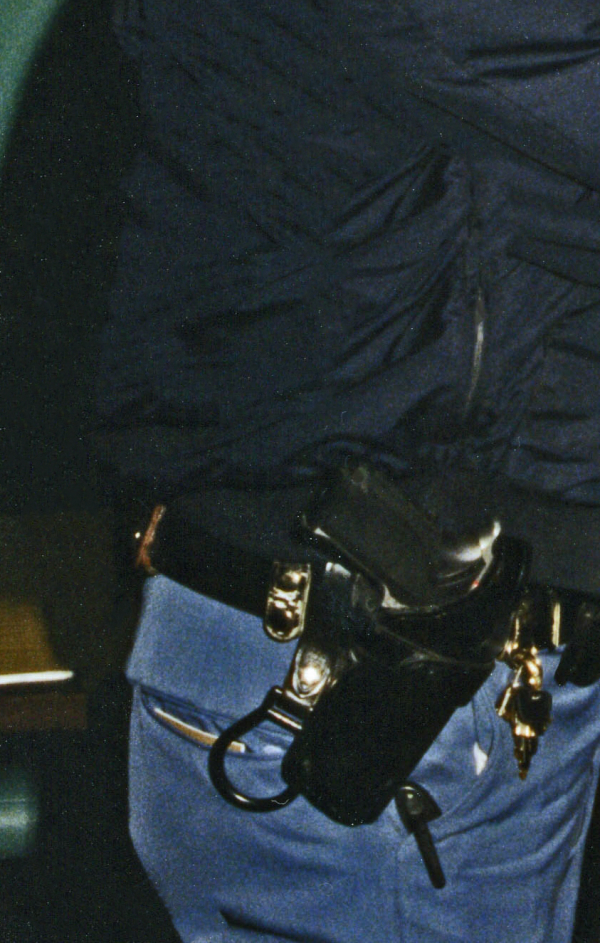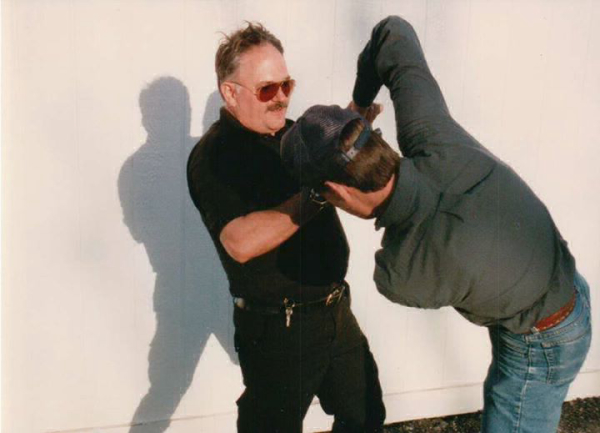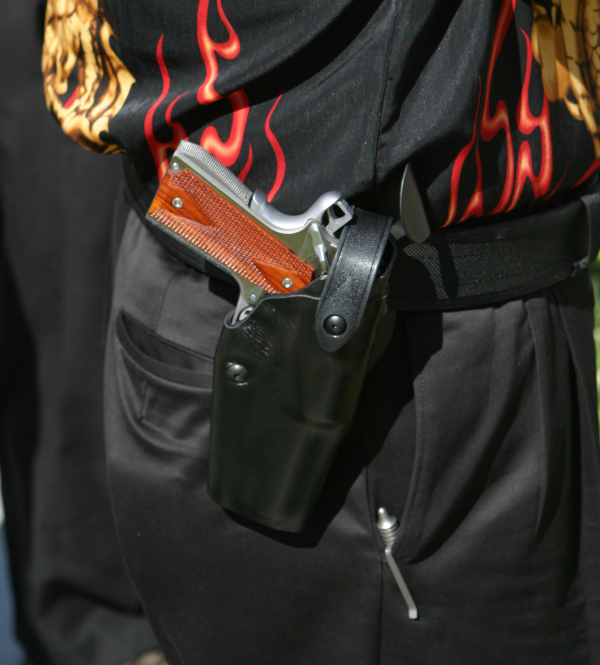In observance of our 15th Anniversary yesterday, this feature is from an early edition, the July 10, 2008 issue of our service. The threat of a disarm is still real; it’s critical to have an understanding of that and to prepare countermeasures.
I was accosted by a young police officer of some experience who is currently facing a crossroads in his career. He asked about holsters, specifically about a particular make and model. Made by a company which has been a pioneer in officer safety, it was a model of great popularity. A component, made by the company, to add to the safety and security aspects of the holster, was mandated by the agency when the rigs were bought.

While it makes the holster safer from gun grab attempts, it makes the holster no quicker for most to draw from. Many officers simply don’t use the additional safety device. This leads us to the problem: We fight to prevent a tragedy of one sort while we fail to prepare for another dread result that is more likely to occur than the first.
Over the many years of my career, I’ve seen the officers killed statistics from FBI/UCR vary. For the longest time, around 20% or so of officers feloniously killed were killed with their own gun or a partner’s gun.
That is far too high.
One intervention that sought to minimize that number was the advent of the security holster. It worked . . . to a degree. But it’s one component to an overall safety plan first articulated by legendary police trainer Massad Ayoob. It’s not the whole enchilada.

It misses one major category of gun-grabs: the assault on the drawn handgun. Lindell gun retention instructors have found that fully one-half of gun-grab attempts are launched on a gun already drawn. The holster is of no import in that event.
Besides, the risk of seizure of a holstered handgun is dwarfed by the likelihood of someone bringing his own firearm – or edged weapon – to the fight. In that event, quick access to the handgun, being able to fight in confined space engagements, and being quick-witted enough to move-draw-move-fire-cover-fire (if needed) are vastly more important than a security holster.
To bring everyone up to speed, Ayoob’s layered gun retention safety net is made up of:
Awareness (Anticipate the assault)
Concealable body armor
Security holster
Backup gun
Weapon retention and disarming skills
Awareness is the cornerstone of “the deal.” You have to think “GUN” on contacts or whenever you’re around people you don’t know. This means you will turn the holstered gun away from people you escort or interview. It means that you rest your forearm on the gripping area of the holstered handgun so you can feel the touch of inquisitive fingers.
Body armor is helpful in shootouts even if you are being shot with your own gun. Make sure your duty load won’t perforate your armor. A backup gun? It’s there in case the gungrab attempt is successful. Remember the first rule in a gunfight? According to Mark Moritz, it’s “have a gun.” For us, two is one. One can get lost, be broken, be taken from us, etc.

The security holster is an asset. I like them. It’s absolutely essential that you be able to draw from them quickly, confidently and surely. Don’t mess this up. If the holster is complicated, you have to spend more time with it. Do so. You have a family to return to, a duty to do when you come back to work.
Gun retention and disarming skills are very helpful. My favorite, because I have the most experience with it, is the Lindell system. Instructor training is available at the National Law Enforcement Training Center, Kansas City MO. To really learn the skills, learn to teach them. It makes you a better practitioner.
Why disarming skills? Well, if the offender gets your gun away from you, the quickest course of action is to snatch it back.
(For more information on gun retention and disarming, check http://www.www.nletc.com/)
-- Rich Grassi